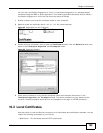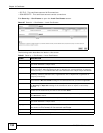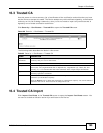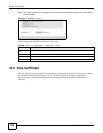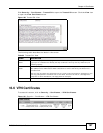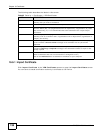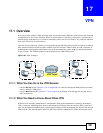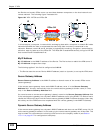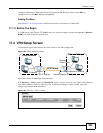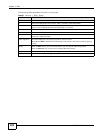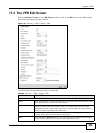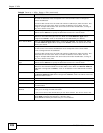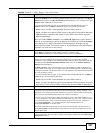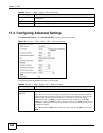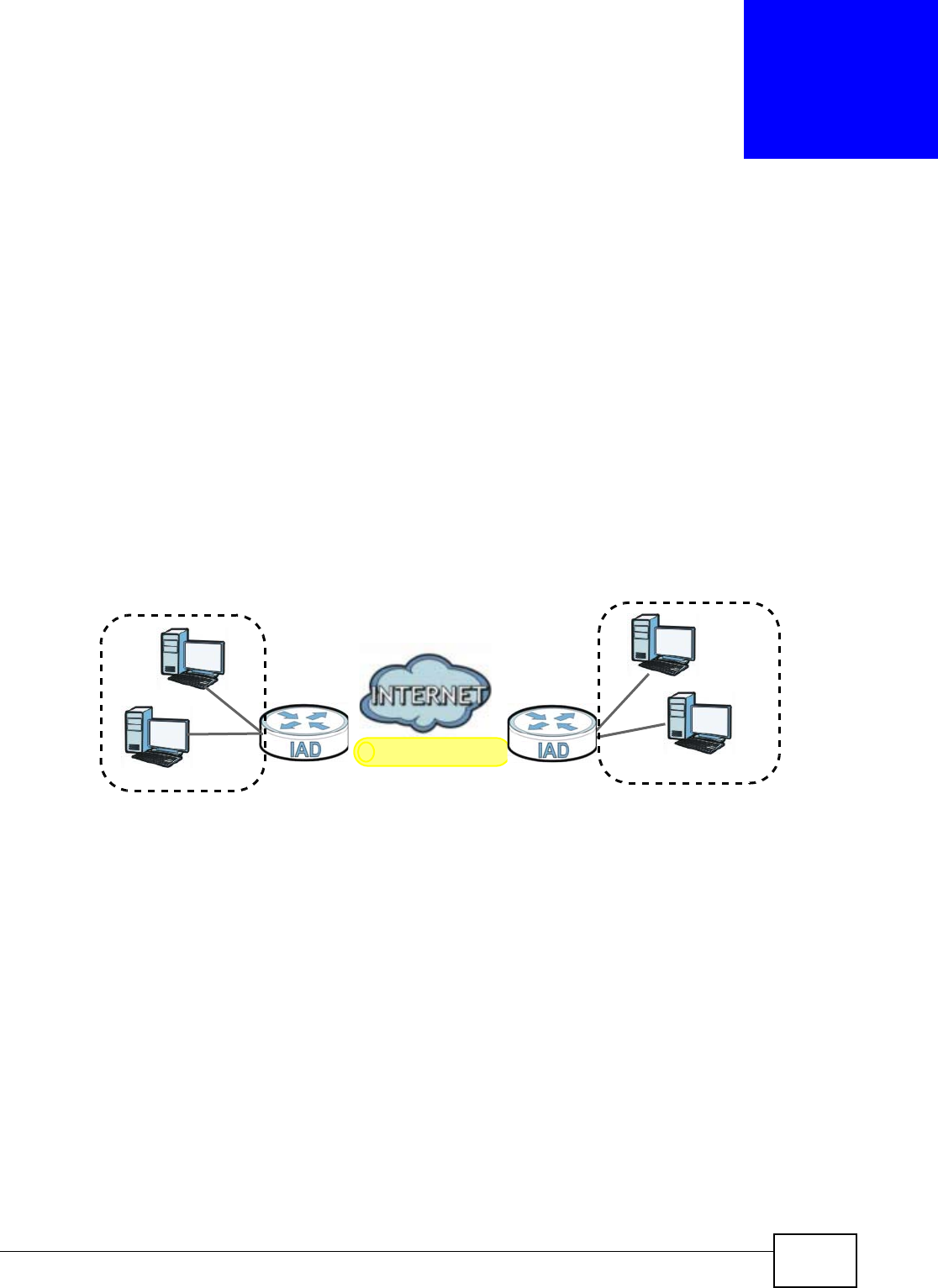
EMG5324-D10A User’s Guide 201
CHAPTER 17
VPN
17.1 Overview
A virtual private network (VPN) provides secure communications between sites without the expense
of leased site-to-site lines. A secure VPN is a combination of tunneling, encryption, authentication,
access control and auditing. It is used to transport traffic over the Internet or any insecure network
that uses TCP/IP for communication.
Internet Protocol Security (IPSec) is a standards-based VPN that offers flexible solutions for secure
data communications across a public network like the Internet. IPSec is built around a number of
standardized cryptographic techniques to provide confidentiality, data integrity and authentication
at the IP layer. The following figure is an example of an IPSec VPN tunnel.
Figure 103 VPN: Example
17.1.1 What You Can Do in the VPN Screens
•Use the Setup screen (Section 17.2 on page 203) to view the configured VPN policies and add,
edit or remove a VPN policy.
•Use the Monitor screen (Section 17.5 on page 210) to display and manage the current active
VPN connections.
17.1.2 What You Need to Know About IPSec VPN
A VPN tunnel is usually established in two phases. Each phase establishes a security association
(SA), a contract indicating what security parameters the Device and the remote IPSec router will
use. The first phase establishes an Internet Key Exchange (IKE) SA between the Device and remote
IPSec router. The second phase uses the IKE SA to securely establish an IPSec SA through which
VPN Tunnel
X
Y



